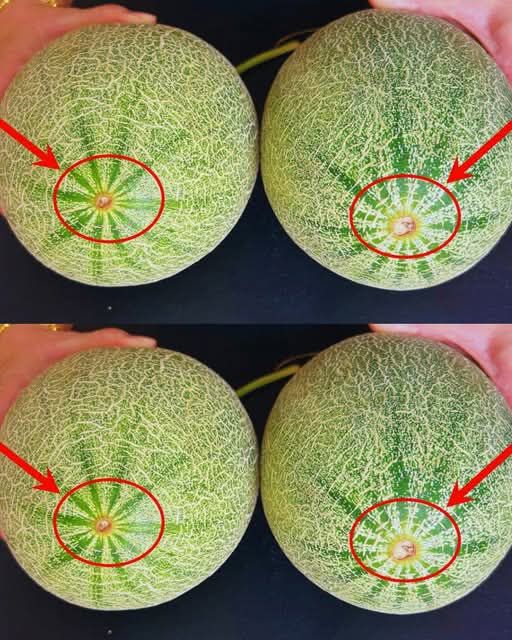ADVERTISEMENT
A melon should feel heavy for its size. If the melon feels light or hollow when you pick it up, it could indicate that it’s not as juicy or sweet.
- Watermelon: Pick up the melon and give it a gentle feel—if it’s heavy, it’s a sign that it’s packed with water, which translates to a juicier, sweeter melon.
- Cantaloupe and Honeydew: Similar to watermelon, a ripe melon will feel heavy for its size, suggesting it’s full of water and sugars.
Step 4: Tap for a Hollow Sound
One of the most effective ways to test a melon’s ripeness is to give it a tap. This works best with watermelon and cantaloupe.
- Watermelon: Hold the melon and tap it with your fingers. A ripe watermelon will produce a deep, hollow sound when tapped. This sound indicates that the melon is full of water and is perfectly ripe.
- Cantaloupe: When you tap a ripe cantaloupe, it should produce a slightly hollow sound. If it’s too dense or doesn’t produce much of a sound, it may not be fully ripe.
Step 5: Check for Sugar Spots or Sweet Aroma
Another telltale sign of sweetness is the fragrance and sugar spots on the melon:
- Sweet Aroma: Bring the melon up to your nose and sniff the stem end. A ripe melon, particularly cantaloupe and honeydew, should emit a strong, sweet fragrance. If there’s no scent, it’s a sign the melon may not be fully ripe.
- Sugar Spots: Look for small sugar spots (tiny dark patches or crystallized areas) on the skin, especially in cantaloupes. These sugar spots are a good sign that the melon has developed its sugars and is likely to be sweet.
Step 6: Examine the Skin Texture
Each melon has a unique texture on its skin, and it can help indicate ripeness.
- Watermelon: The skin should feel firm and smooth. If there are any soft spots, it could be an indicator of overripeness or a section of the melon that has begun to spoil.
- Cantaloupe: A ripe cantaloupe will have a slightly rough, netted skin that feels slightly soft to the touch. A rock-hard cantaloupe isn’t ripe yet and will be tasteless.
- Honeydew: Honeydews should feel firm, with slightly waxy skin when they’re ripe.
Step 7: Look for the “Field Spot”
Melons like watermelon often have a “field spot” on one side, where they were resting on the ground while growing. This spot is typically yellowish in color and is an indicator of ripeness.
- Watermelon: If the field spot is yellow, it’s a good sign the watermelon is ripe and sweet. If it’s still white or pale green, it may not be fully ripe yet.
Bonus Tip: Don’t Rely Only on the Stem
The stem of a melon may not always be the best indicator of ripeness, especially when it comes to watermelon. While it’s true that a dried or brown stem can sometimes indicate ripeness, it’s not always a reliable sign. For melons that don’t have visible stems, focus more on the color, weight, and tapping techniques.
Final Thoughts
Picking a perfectly sweet melon doesn’t have to be a guessing game. By using these simple techniques—checking the color, feeling the weight, tapping for a hollow sound, and paying attention to the aroma and texture—you can dramatically improve your chances of picking a sweet, ripe melon every time.
Next time you’re at the store, use these tips to find the perfect melon for your next summer BBQ, fruit salad, or healthy snack. Sweet, juicy melons are just a few taps and checks away!
